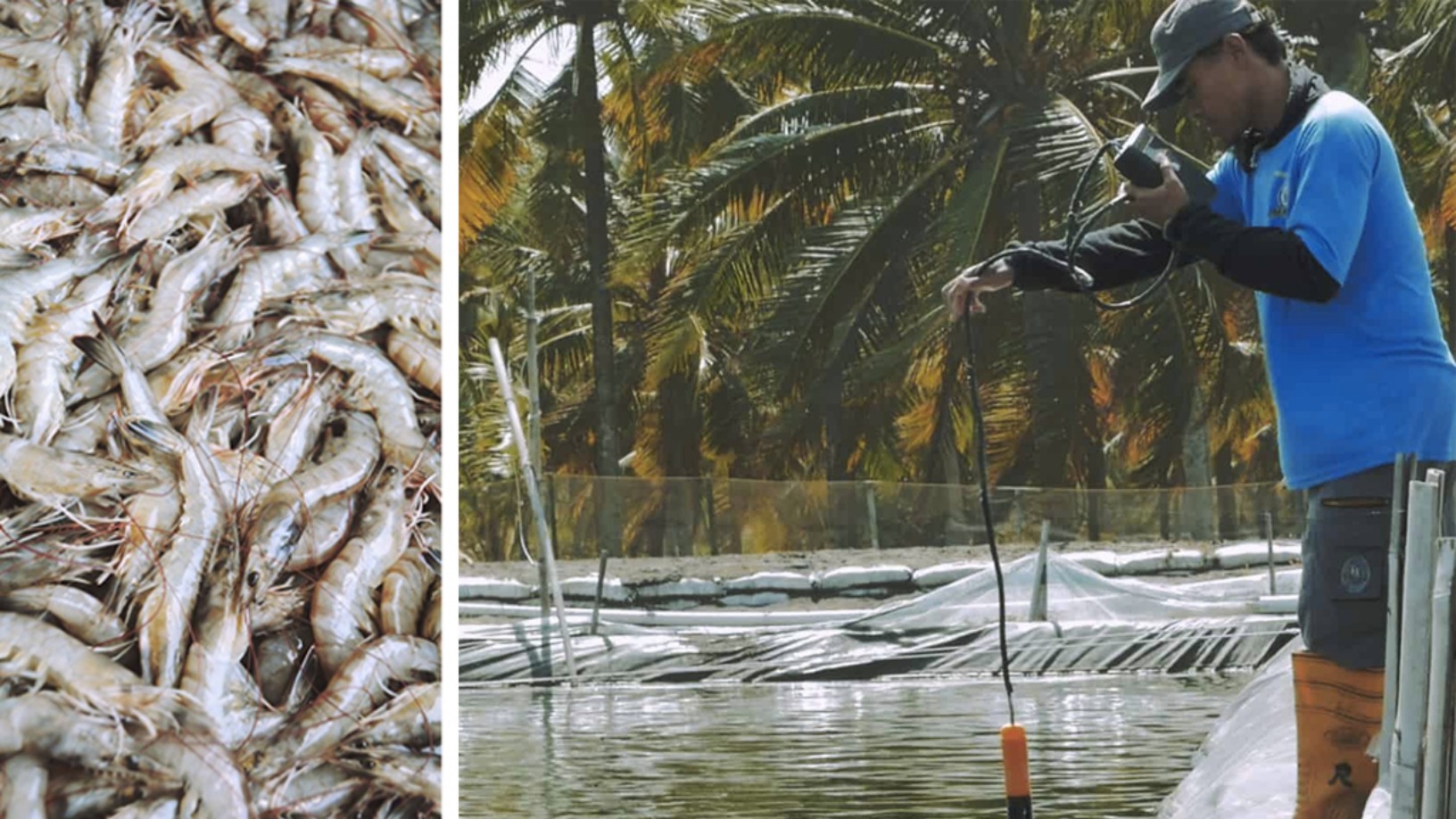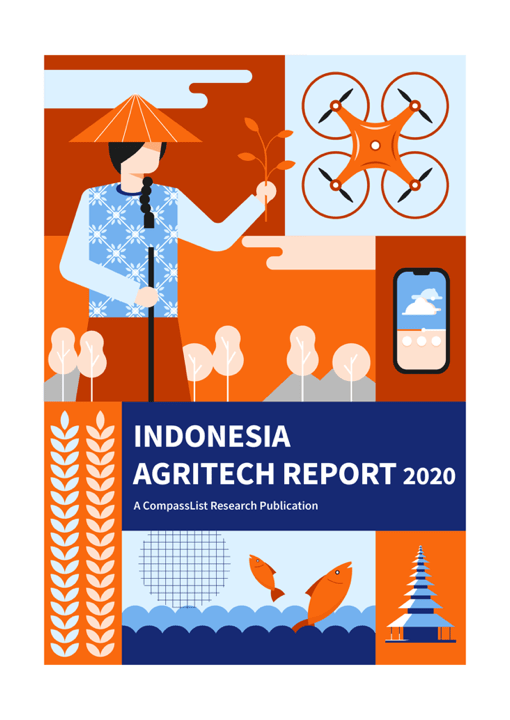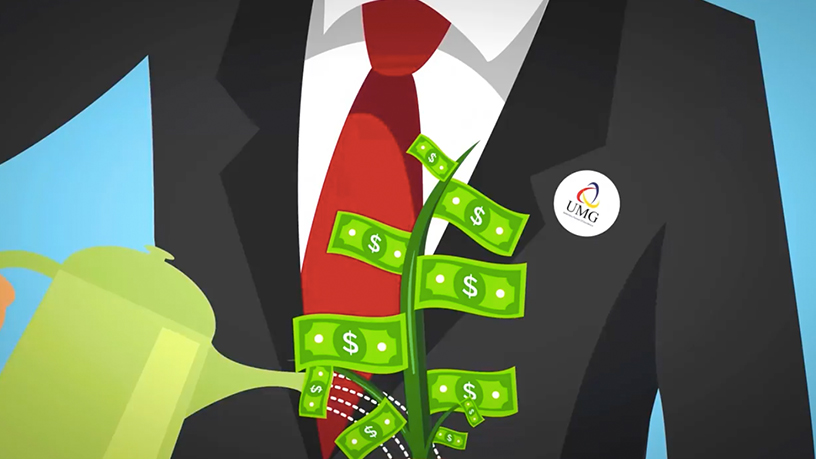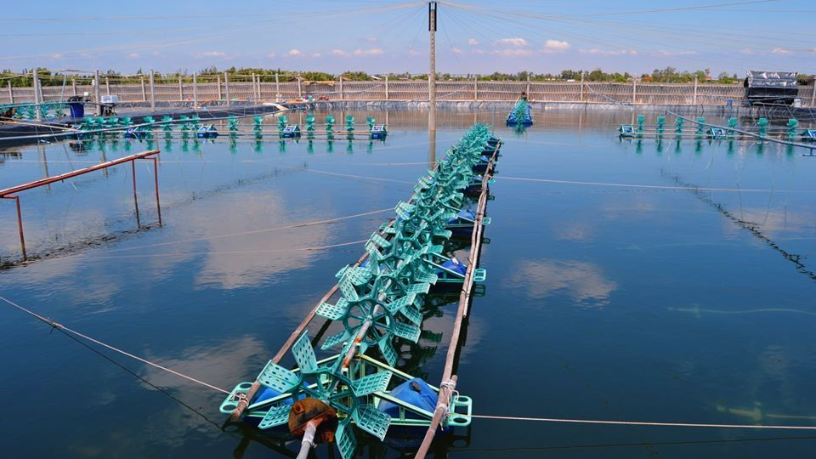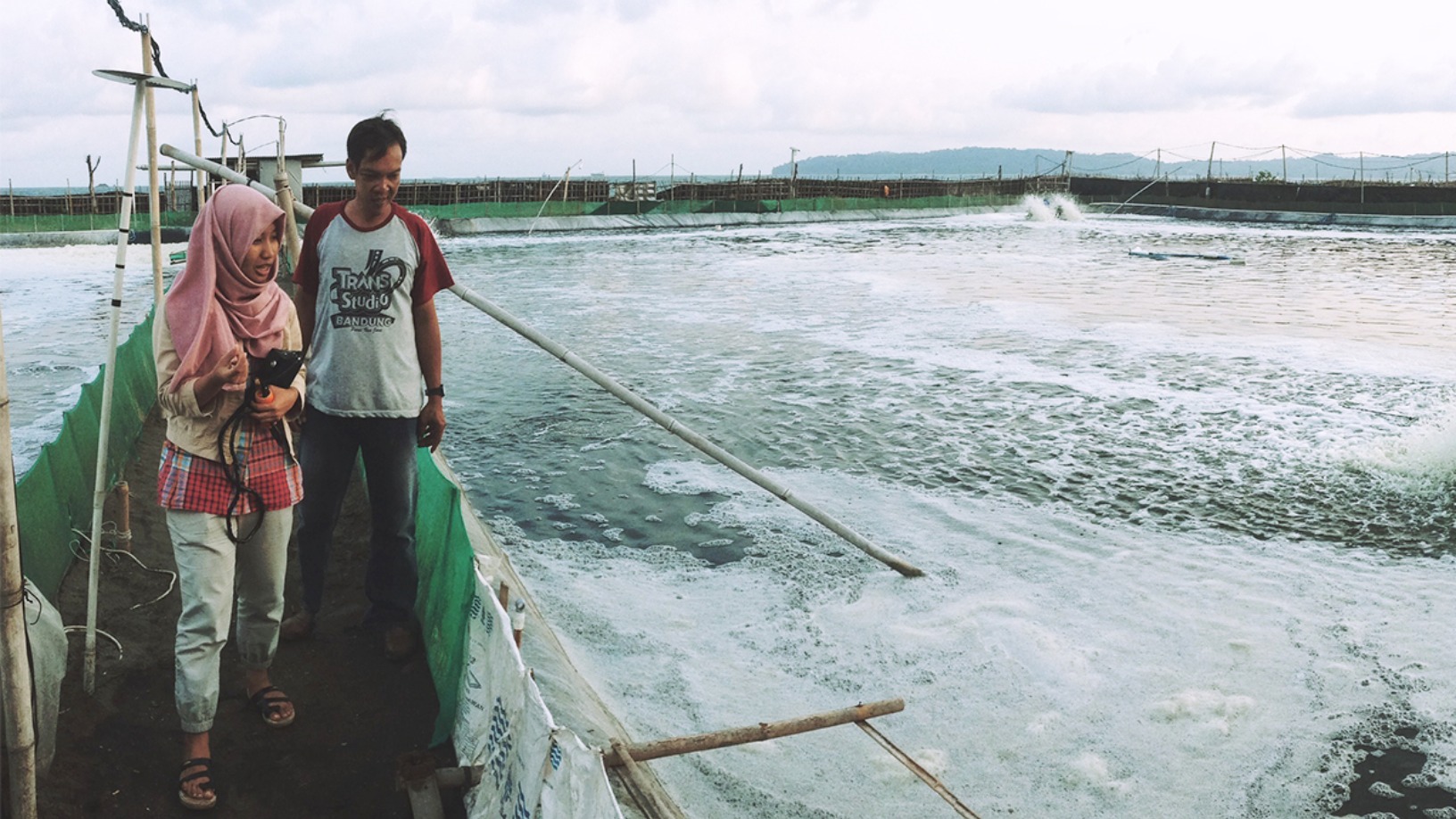Shrimp farming is complicated business. The farmers need to carefully maintain the water quality in their pools to minimize shrimp deaths and maintain efficiency, but most current monitoring tools can be expensive and provide only raw data. Without extensive knowledge or expert help, shrimp farmers cannot make sense of that data.
Yogyakarta-based startup JALA has answered the call to develop sensors for shrimp farms. Their internet-connected sensor measures multiple parameters simultaneously and uploads them into cloud storage. From there, the data is processed and displayed on an online dashboard, helping farmers interpret the data and take action.
JALA has begun advertising its newest mass-produced sensor, Baruno, since CompassList interviewed CEO Liris Maduningtyas in late 2019 for the Indonesia Agritech Report. JALA has upgraded the sensor with waterproofing and longer battery life, thanks to manufacturing partners in China handling the production.
This interview has been edited for length and clarity.
Can you tell us how JALA started, back when it was called Blumbangreksa?
We started out in 2015 as a project building a real-time monitoring system for shrimp farms. At the time, we won awards and grants allowing us to develop the idea into something with better business value. We decided to develop Blumbangreksa into a water-quality sensor that could detect and send all the data to a smartphone app in real time. Unfortunately, we found that nobody wanted to buy our product – not even with discounts.
It was late, but we decided to do market research and found that we needed to adjust our product-market fit by changing our features. Most importantly, we learned that people did not want just raw data. They wanted to know what the data meant and what to do with it.
We also decided that since we were actually selling insights, we should be selling in a subscription-based program (SaaS) and loaning the devices to customers. This would help overcome the reluctance of farmers to buy the device. It was also then that we changed our name to JALA.
In 2018, as our funds were running low, we decided to the join the Brinc and Hatch accelerator programs. We then realized that we were on to something but our business strategies were lacking. And so, we improved them and continued with our products, earning revenue and raising seed funding. In 2018, we helped about 20 shrimp farmers with a total of about 200 pools. In 2019, more than 2,000 farmers were using our product in a total of about 5,000 pools.
We learned that people did not want just raw data. They wanted to know what the data meant and what to do with it
Our products have been developed quite a bit. We have free and premium subscription plans for our software, fixed sensors that can do continuous measurements, and portable devices for quick measurements. Through pilot projects, our product has reached Malaysia, Thailand, Vietnam and China as well. We are also trialing our SaaS software in other countries such as India and Ecuador.
Did you encounter any major problems raising funds?
It took us about one-and-a-half years to find an investor, since we began to run as a business in 2017. At the time, our team was not ready to start the business and present it to investors. We also lacked the traction to prove our business case. We had to refine our product-market fit, do our research, and do the work.
We also reshuffled the team, putting people in the right roles. We understood that some of our founders lacked experience, so the priority was to shift people into the roles where they fit best. After we joined Hatch in 2018, the mentors asked us to change the team and we agreed to appoint me as the new CEO.
How do you separate between the hardware and software?
Our software has features such as data-based recommendations, news and price updates. All of these can be accessed by clients. Premium features allow access to financial reporting and a loaned device with free maintenance. Those subscribing to the free SaaS mode can link it with existing sensors, while premium subscribers can get the devices on loan. What customers are paying for is essentially the ability to get the data processed.
How do you balance JALA’s business considerations with its mission to help shrimp farmers?
We support smaller fish farms that can’t afford our products through a free program that groups a few such farms together. Meanwhile, we offer a B2B bundle for bigger shrimp farms. We have enterprise products and we help them develop their own data ecosystem according to their existing SOPs.
After four years, is JALA profitable?
Not yet, because we only really started running this as a business in 2017. Prior to that it was just a tech project. We didn’t know if it was going to work as a business. The target is to be profitable in 2021–2022. We already have net positive monthly cashflow.
What are the challenges you have encountered in reaching profitability?
In Indonesia, a big challenge for all hardware startups is manufacturing. Indonesia’s ecosystem is currently just not supportive of hardware startups. Manufacturing here is very expensive. If you want to get cheaper prices, you need to produce a huge number of units.
Our manufacturing industry is geared toward mass-market products, such as vehicles and daily goods. We are working with a lead engineer from London, and manufacturers in Hong Kong and Shenzhen to go into mass production. We were able to secure these deals because, with the last of our money, we went to Hong Kong and Shenzhen to find partners.
The target is to be profitable in 2021–2022. We already have net positive monthly cashflow
In your experience, what do investors think of agritech in Indonesia?
Up until recently, investors in Indonesia were mostly looking into e-commerce and fintech, while other sectors were left behind. Outside Indonesia, foodtech and agritech were big targets because the technology is so important for our survival. Now, investors here are looking into the sector in a big way, especially considering that Indonesia has always been an agrarian country with lots of potential for maritime resources as well.
Can you tell us more about your future plans?
In 2019, we will be finishing up collaborations with NGOs such as Conservation International, with whom we have projects in sustainable fishery development. We will also continue developing products and expanding our presence in Indonesia. We are open for collaborations within the Southeast Asia region and we will be considering plans to scale up our business from current pilot projects.
Do you have plans to collaborate with other startups?
We find that it has been easier to collaborate with startups from abroad because local startups tend to keep to themselves or insist on “leading” the collaboration effort. We’re open to working with anyone who wants to, though. We’re working with initiatives from Malaysia, Vietnam and other startups, too, including Malaysia’s AI for Good and a few fintech companies.
This interview is part of a series of conversations with leading startups and investors in Indonesia's agriculture technology sector. For more in-depth research and insights about Indonesian agritech, the full Indonesia Agritech Report 2020 by CompassList is now available online to all readers.
